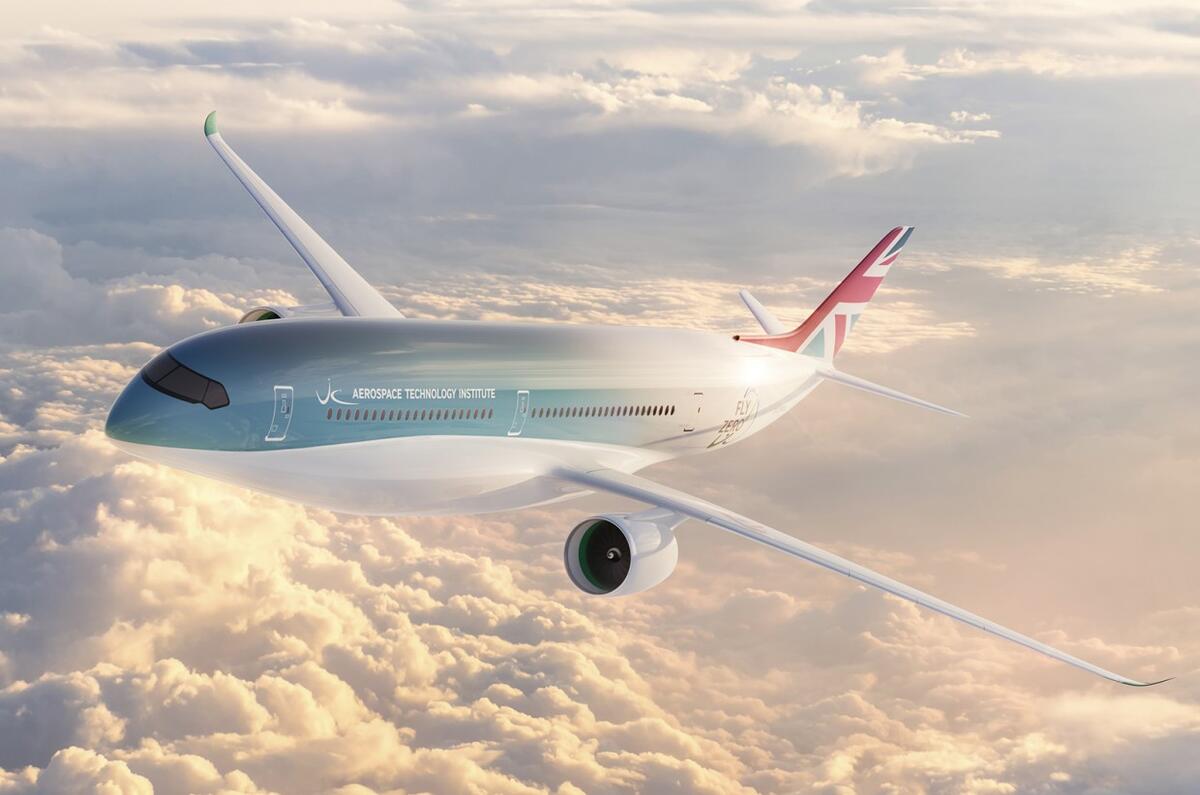A new hydrogen-powered plane concept has been revealed, which could allow up to 279 passengers to fly non-stop from London to San Francisco.
It has been developed by British engineers under the FlyZero project banner. That project is part of the UK government- and industry-backed Aerospace Technology Institute which will invest a hefty £3.9 billion in research between now and 2026.
The new concept showcases the potential for green liquid hydrogen to be used as a lightweight aviation fuel, with the ATI claiming it uses no CO2 when burned and could offer three times the energy of the kerosene fuel currently used per kilogramme.
Notably, liquid hydrogen offers 60 times the energy of a battery per kilogramme, showcasing why pure battery electric technology isn’t suitable for planes.
The ATI FlyZero mid-size aircraft concept has a 54-metre wingspan and can seat 279 passengers – slightly fewer than an Airbus A340 – and has a claimed range of 5250 nautical miles, putting cities such as San Francisco, Delhi and Beijing within non-stop reach of London.
The liquid hydrogen is stored in cryogenic fuel tanks house in the rear fuselage (with two smaller tanks in the forwards fuselage to keep the plane balanced) at around minus 250 degrees Celsius. That fuel powers two turbofan engines through hydrogen combustion.
The ATI says that it had developed a larger and longer-range aircraft than the short-haul Boeing 737 and Airbus A320 that are most often seen in the skies so that the necessary new infrastructure for the fuel could be concentrated on fewer international airports.
While showcasing the concept, the ATI has acknowledged that major challenges remain before hydrogen-powered flight is possible. Producing green hydrogen is currently expensive, although this is likely to fall as demand for it grows - and the ATI reckons it could be cheaper to operate than conventional air fact buy the mid-2030s onwards.
New technology that will be required include not just hydrogen tanks, gas turbines and cryogenic fuel systems but ‘dry’ wings (without conventional fuel tanks). One other challenge will be ensuring that any green liquid hydrogen is produced in an environmentally friendly manner, and not through energy created by burning fossil fuels.
The FlyZero project has pledged to publish more details on its project early next year, along with three final concepts for regional, narrow-body and mid-size aircraft.
READ MORE
e-CARS
e-BIKES
e-MOTORBIKES
e-SCOOTERS








Join the debate
Add your comment
I would seriously question the claim tht KG for KG that Amonia is 3x more energy dense than jet fuel or if it is actual liquid hydogen, then the tanks and cooling, and pressure maintenance, and anti leak measures( no small matter) by weight must surely be taken into a/c when claiming 3x energy density.....and scaling that up to jets that carry 300 / 400 people is a very serious ask...
Surely it is greener just to use the existing infrastructure and use green SAF jet fuel...no huge rebuild co2 expense(no extra infrastructure expense, use the same planes, use same pipelines, same storage, tried and tested engine tech) overall a vast Co2 saving over a complete rebuild globally.
Oops, I seemed to have stubled onto the Autoplane website whilst looking for stories about cars.
This actually looks promising.
Having been on an transatlantic flight this week, it did make me wonder how battery power is even feasible. My feeling (from a novice perspective) is it simply isn't. We need way better energy density than li-ion for air travel.
Keeping things simple... consider the weight: Sure, there are limits to your luggage - but I watched as the Airbus was loaded with many tonnes of cargo as well as luggage. Also, not to mention the many items I could have carried on from duty-free. None of which would be weighed.
Bringing things back to Earth, we are struggling to keep the weight down on BEV cars just to propel them 2-300+ miles (under sensible weather conditions).